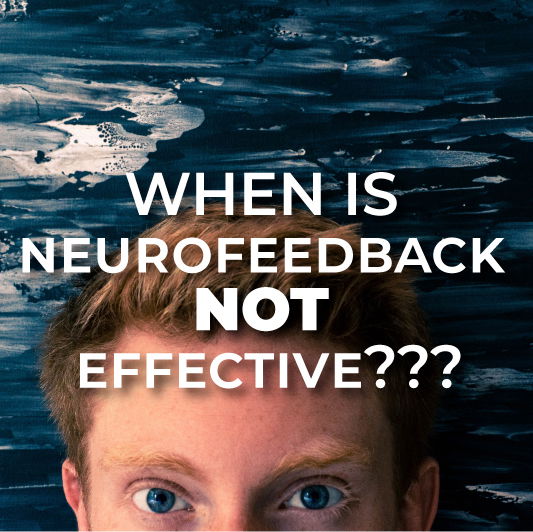When Is Neurofeedback NOT Effective?

If you are a healthy skeptic like I once was, you may question the effectiveness of neurofeedback. Can sitting in a comfortable chair with a few sensors attached to your head for 33 minutes really have any effect on your brain?
To date, millions of people have experienced life-changing improvements to their health, thanks to NeurOptimal®. This system is the specific type of neurofeedback technology I chose to use in my practice because it had such a positive impact on me. This success is why I wanted to offer it to others.
Nonetheless, are there times or situations when NeurOptimal® is not effective?
Battling Untreated Physical Conditions
Many people who seek out neurofeedback also have other physical concerns. They may or may not have sought medical treatment for these problems. For example, someone may be suffering from untreated:
digestive issues
mold or food sensitivities
heavy metals or toxins
underlying infections
hormonal imbalances
All of these can take a toll on your physical and mental health. Brain training through neurofeedback is an incredible tool in your health and wellness toolbox. But it is not a cure-all for every health issue.
The foods we eat, how much we exercise, our exposure to environmental toxins, maintenance of our gut flora, and our mindset ALL affect the brain. Dr Mark Hyman
Inconsistent or Short-Term Sessions
The primary reason that some people find NeurOptimal® to be ineffective is that they do too few sessions or rely on very inconsistent training.
Training your brain with NeurOptimal® is like working with a personal trainer, going to the gym, or learning any new skills. The key to success is repetition and consistency. If you commit to your goal by practicing regularly, you are likely to see results.
You wouldn’t go to the gym a couple of times and give up because you haven’t reached your fitness goals. It would be unrealistic to expect drastic results with minimal training.
Similarly, if you are dealing with a concern that has been with you for years, it’s unreasonable to expect it to disappear after a couple of neurofeedback sessions. Depression, anxiety, insomnia, or any other trouble that brings you to my office will require time to change.
What Is An Ideal Neurofeedback Training Schedule?
When someone first starts training with NeurOptimal®, I recommend 1-2 sessions per week. Once you start seeing the changes you desire, you can switch to every other week and see if you maintain the benefits.
If you want consistent, on-demand brain training, you can consider renting a machine or even buying one to use in the comfort of your home and on your schedule. These options are a cost-effective way to get the most out of your neurofeedback experience, especially for long term persistent conditions.
I also want to add that not all neurofeedback systems (and their effectiveness) are the same. If you want to learn more about my own journey about trying a few different types of neurofeedback systems (from different providers), read this story: Different neurofeedback systems and their comparison.
Start Your Journey Today!
Do you have areas of your life that need some support? Schedule an appointment to see if neurofeedback is the right choice for you. People who receive consistent brain training report high success rates in improving their quality of life.




